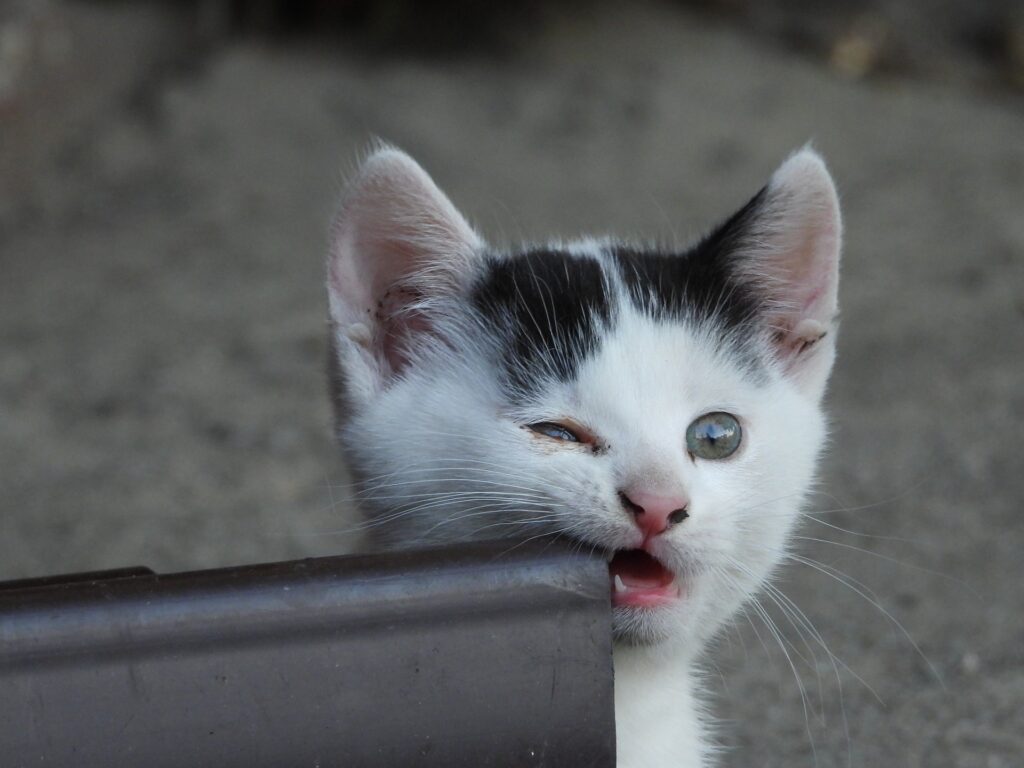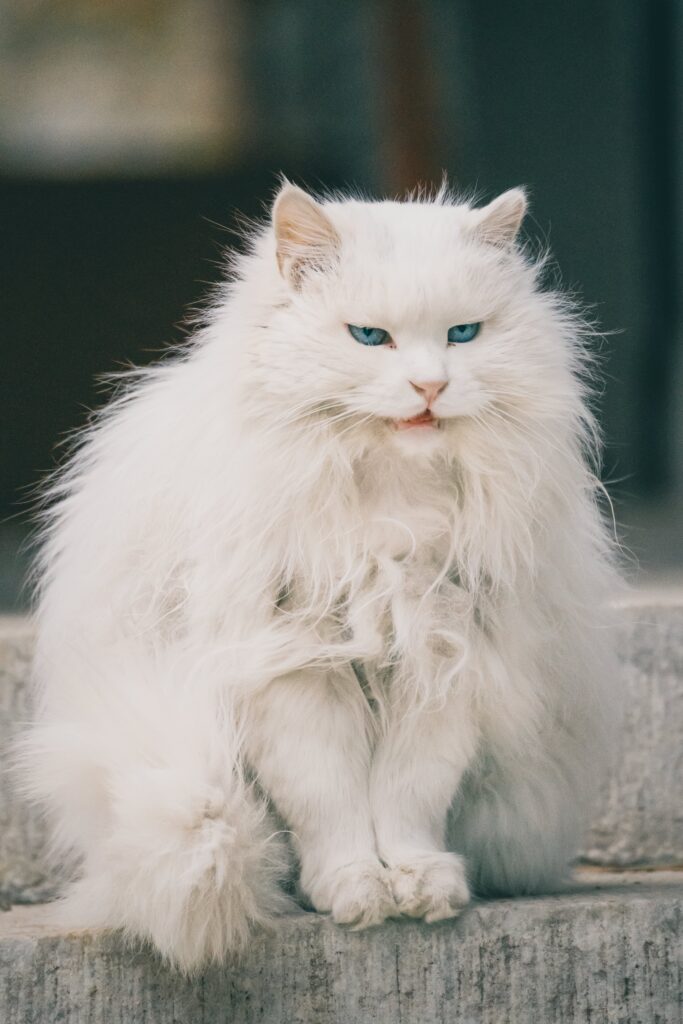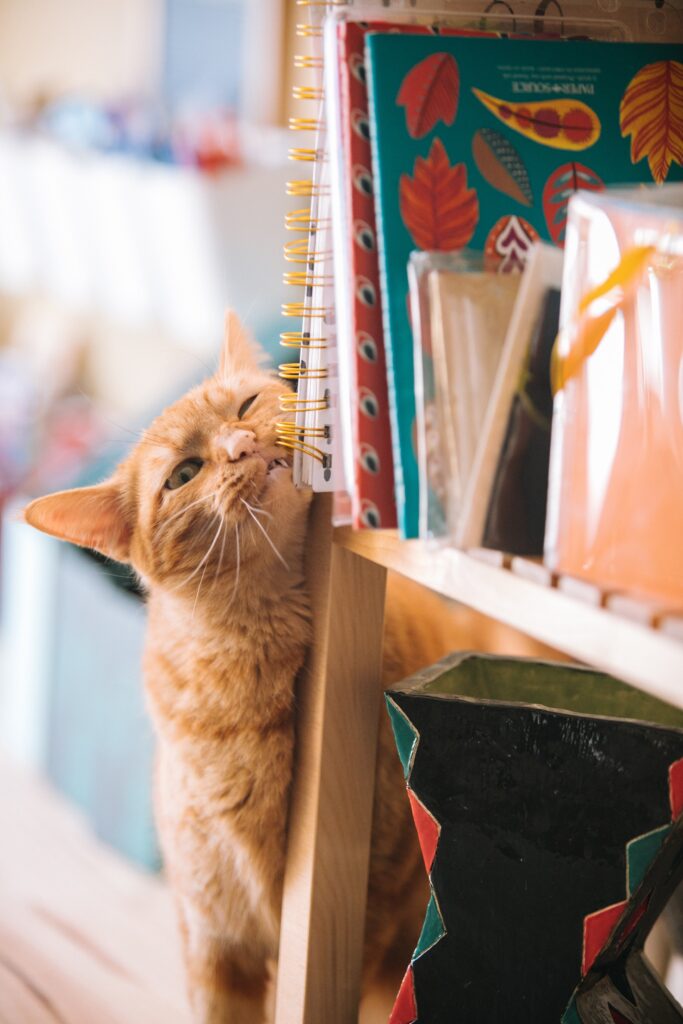Cats are mysterious creatures, and their behaviors can sometimes leave us scratching our heads. One common feline behavior that many cat owners encounter is biting. But why do cats bite, and what does it mean? Let’s explore this intriguing topic and provide some insights into your cat’s behavior.
Surprise Playtime! Why Does My Cat Bite Me Gently Out of the Blue?
Ever had your cat give you a gentle nip seemingly out of nowhere? It’s not meant to hurt you mostly. In fact, it’s an invitation to play! Your cat is saying, “Let’s have some fun together!” If it hurts, it’s not fun.
Love Bites: Why Does My Cat Bite Me and Then Lick Me?
If your cat bites you and follows it up with some loving licks, it’s all about affection. The bite is like a little love nibble, and the licking that comes after is their way of showing they care. Think of it as your cat saying, “You mean a lot to me.“
Petting Predicaments: Why Does My Cat Bite Me When I Pet Her?
Sometimes, while you’re giving your cat some well-deserved attention, they might give you a nip. This usually happens when they get too excited or when you accidentally touch a sensitive spot. It’s their way of saying, “I’m loving this, but I need a breather!“
Purr-fect Contentment: Why Does My Cat Bite Me Gently While Purring?
A gentle bite while your cat is purring is a sign of pure contentment and happiness. They do this when they’re feeling particularly affectionate and relaxed.
Curiosity Nibbles: Why Does My Cat Bite My Nose, Feet, or Hair?
Cats can’t resist exploring their world, and sometimes that includes nibbling on your nose, feet, or hair. They’re just being curious and playful, checking out interesting smells and textures.
Cat Bite Mysteries: Why Do Cats Bite in General?
Cats may bite for various reasons, including playfulness, overstimulation, communication, or to establish their dominance. It all depends on the context and your cat’s unique personality.
Cat Preferences: Why Does My Cat Bite Me and Not Others?
Cats develop different relationships with different members of the family. Their behavior can vary based on their history and interactions with each person. It’s all about the individual bonds they form.
When your cat bites and kneads your blanket, it’s a soothing behavior. It harkens back to their kitten days when they kneaded their mother’s belly for comfort and nourishment. It’s their way of feeling safe and cozy.
In the end, deciphering your cat’s biting behavior is about understanding their cues, respecting their boundaries, and cherishing the unique connection you share. Cats use biting as a form of communication, and interpreting it can help you strengthen your bond with your furry companion.
Remember, if you ever suspect an infection from a cat bite, it’s crucial to seek advice from a medical officer. Infections can be serious and may require antibiotics or other treatments. Your cat’s health and happiness are always top priorities.

How biting behaviours develop? What lies behing abnormaly aggressive ankle bites?
Early separations from the mother, especially at 2 weeks of age, can impact a kitten’s behavior. Emotional responses may intensify, and calming down might take longer. Hand-reared or orphaned kittens, lacking play learning, may display inappropriate aggression, emphasizing the importance of corrective measures early on.
Environmental factors are also important. Artificial environments can trigger abnormal behavior in cats. Without outlets for natural energy release, behaviors like stalking or aggression may manifest unexpectedly. Cats kept in tidy homes might exhibit prey-killing attacks directed at ankles or engage in excessive digging motions. Recognizing these signs early can prevent the development of repetitive behaviors.
Social Play and Motor Skills Develop with Biting
Kittens utilize social play to develop essential motor skills. The playful aggression they display often targets moving stimuli, such as a person walking by. Interestingly, this behavior becomes five times more problematic when directed toward people rather than other cats. Early weaned kittens may struggle to moderate their social play responses, lacking the lessons in claw sheathing and bite inhibition learned during social play.
Comfort-Seeking Habits, Blanked or Furniture Biting

Biting and kneading blankets are rooted in kittenhood comfort. Mimicking actions from their early days, this behavior indicates a desire for safety and coziness. Recognizing these soothing behaviors contributes to your cat’s well-being.
Aggression and Biting as Communication
Aggressive behaviors are a form of communication for cats. Identifying normal from problematic aggression can be challenging, making early intervention important. Because cat bites can lead to significant issues, recognizing and addressing aggression promptly is essential.
As you navigate the nuances of your cat’s behavior, remember that interpreting their cues enhances your bond. Cherish your connection, respect boundaries, and prioritize your cat’s health. If you suspect any issues, consulting a veterinarian ensures timely and appropriate care for your feline companion. Your commitment to understanding your cat fosters a happy and healthy relationship.
Abrupt Cat Behavior: Does your cat bite or claw when sitting on a lap?
Some cats, especially males, may suddenly claw and bite while being petted on a person’s lap. The reason behind this behavior remains unknown, but three theories attempt to explain it. One suggests that excessive handling reaches a threshold, prompting the cat to signal, “That’s enough.” Another proposes that pleasurable petting leads the cat into a light sleep, causing a sudden awakening and subsequent struggle for freedom. The third theory suggests a desire to control the start or end of attention, emphasizing the need to recognize and respect the cat’s limits.
Playful Nips and Courting Tactics
In the realm of cat courtship rituals, male cats showcase a distinctive behavior: the neck grip, a ritualistic gesture completed within a mere 16 seconds. Often mistaken for aggression, this behavior is, in fact, a preparatory action for mating. Drawing parallels, the neck grip has been likened to a queen’s nurturing gestures towards her kittens or engaging in lick-grooming behavior. This courtship dance is complemented by the nape bite, a hunting behavior where a skilled hunter restrains and strategically positions captured prey for an imminent kill. The objective is to either sever the spinal cord or pierce the medulla oblongata using precise canine teeth.
As kittens navigate the learning curve, they initially display varied skills, and the success of their hunting endeavors is influenced by factors such as hunger and prey size, with hungry cats more inclined to execute a swift and effective kill.
By exploring these aspects of cat behavior, you gain a deeper understanding of the complex communication encoded in your feline friend’s actions. Recognizing the nuances of social play, sudden behavior shifts, and hunting rituals contributes to a richer bond between you and your cat.



